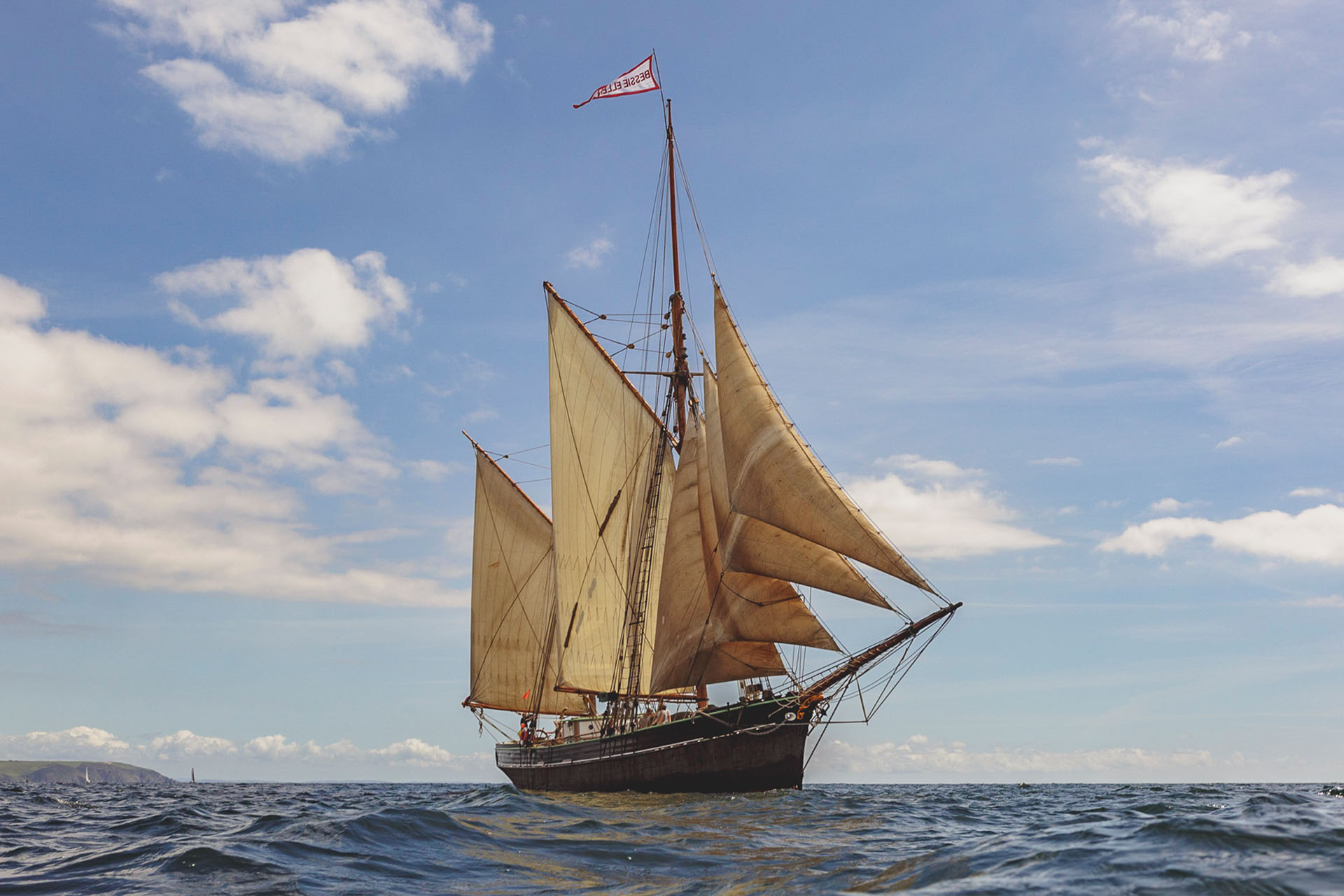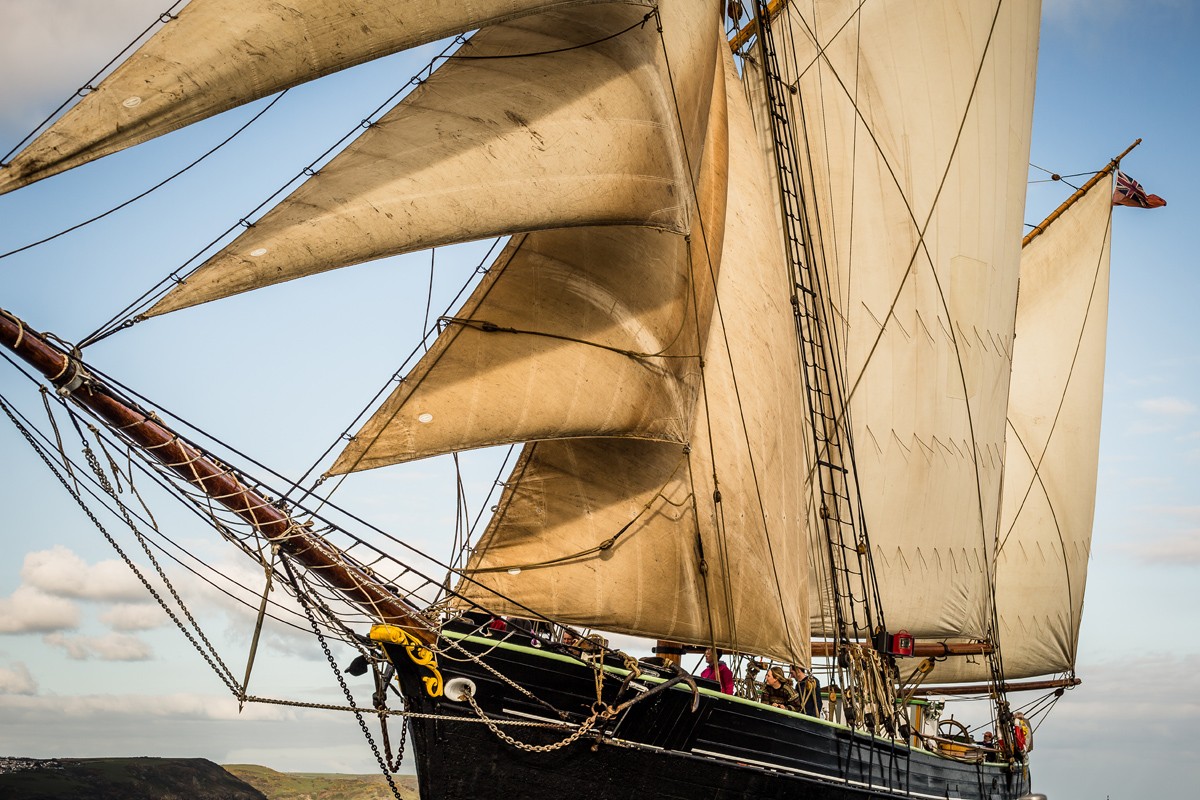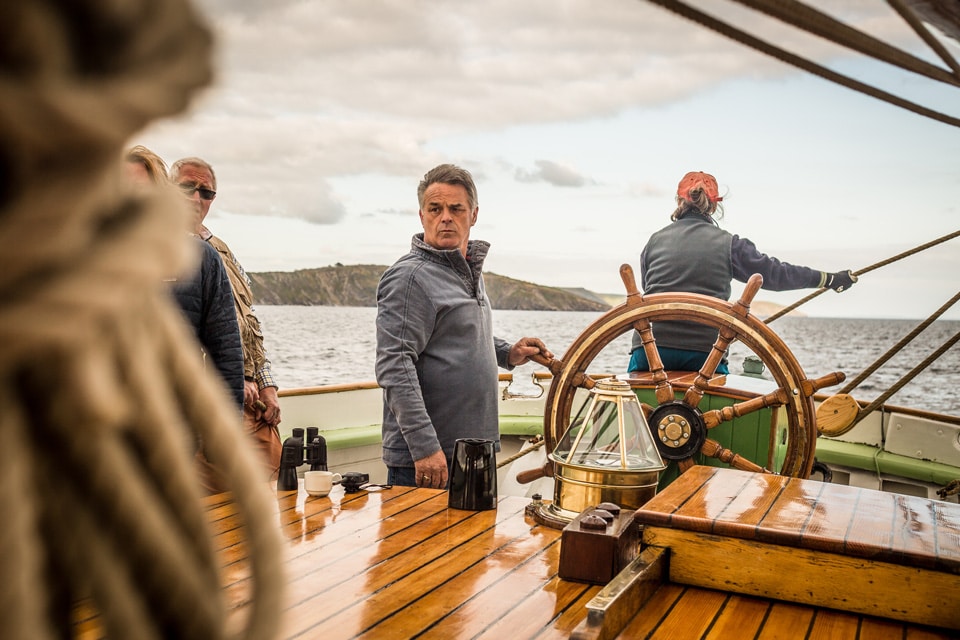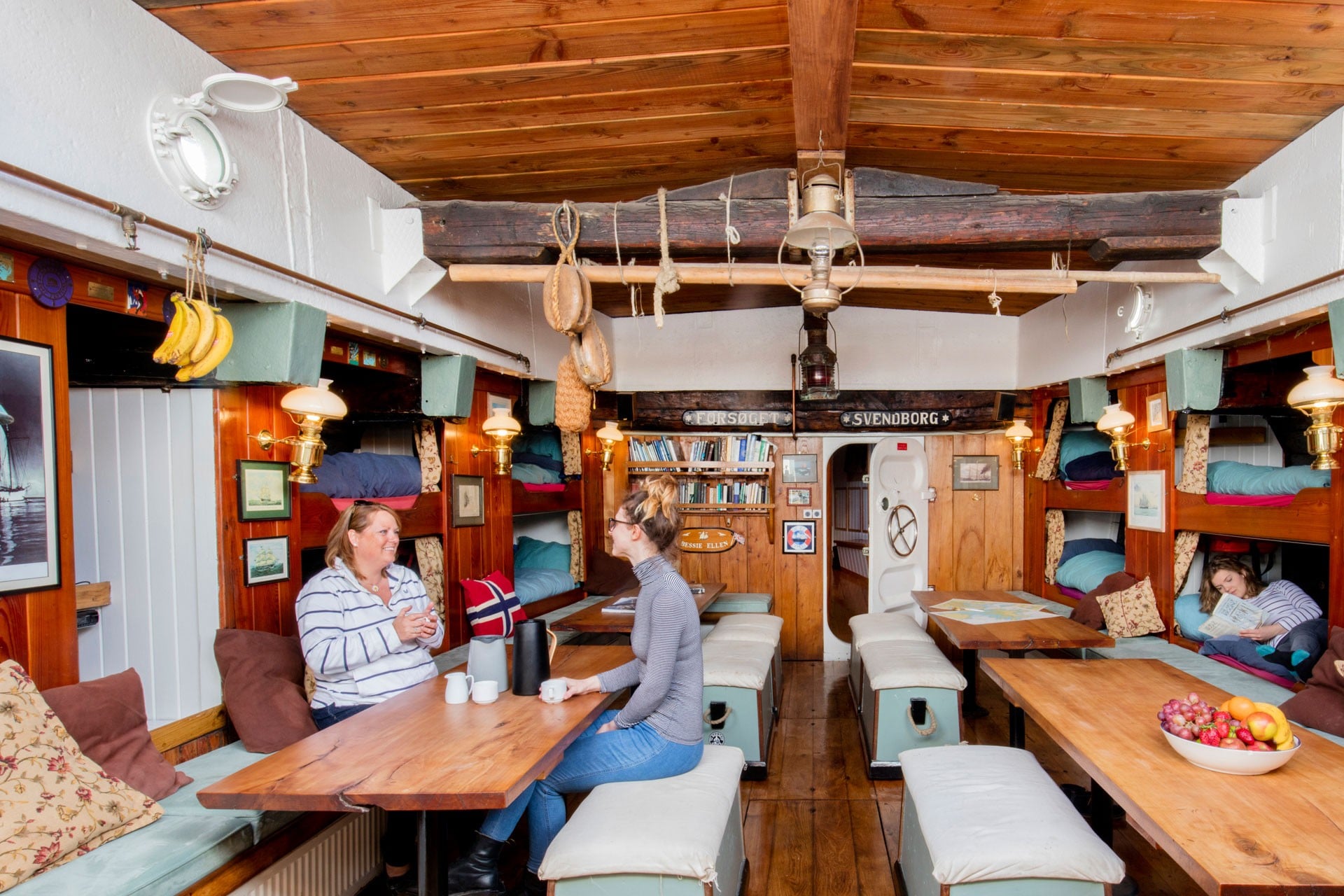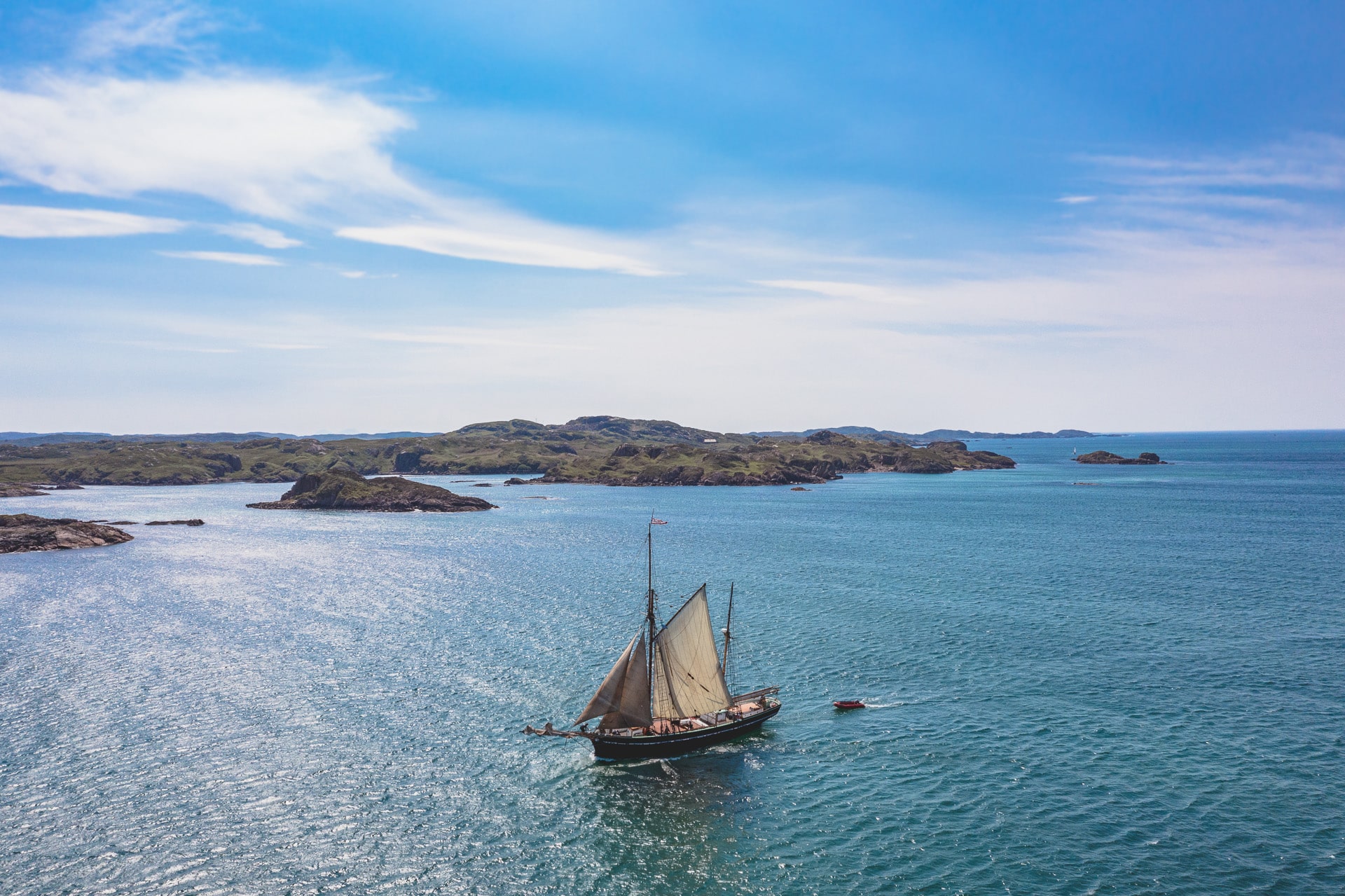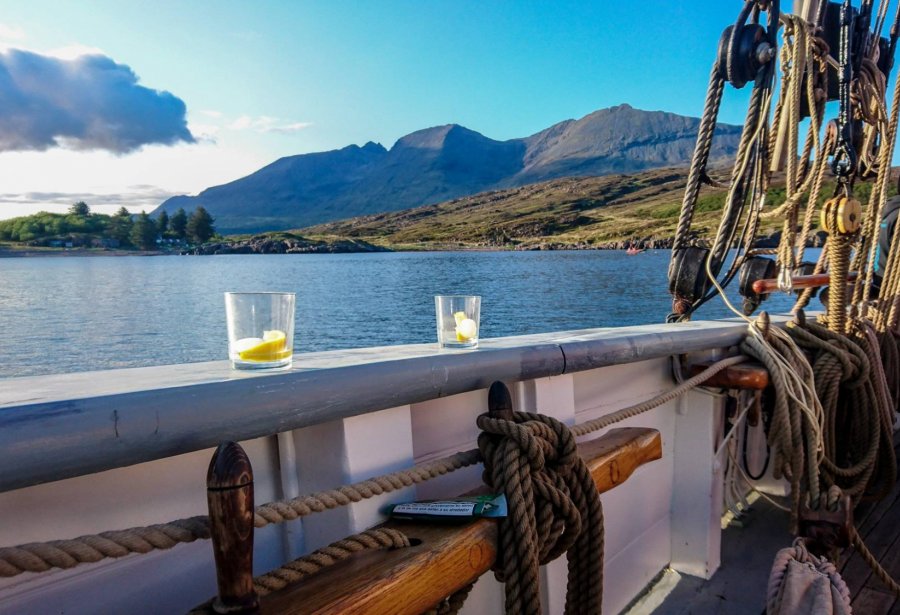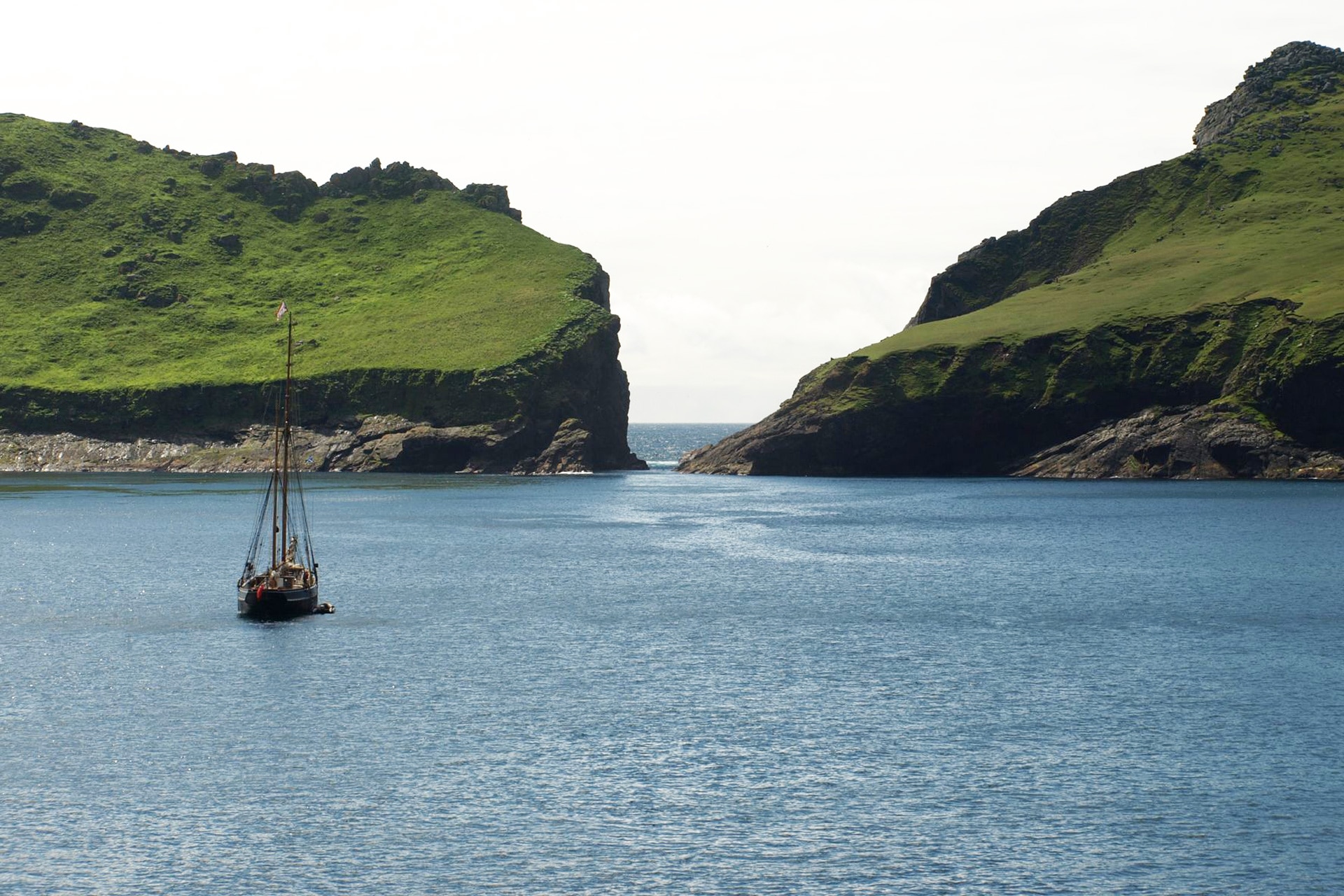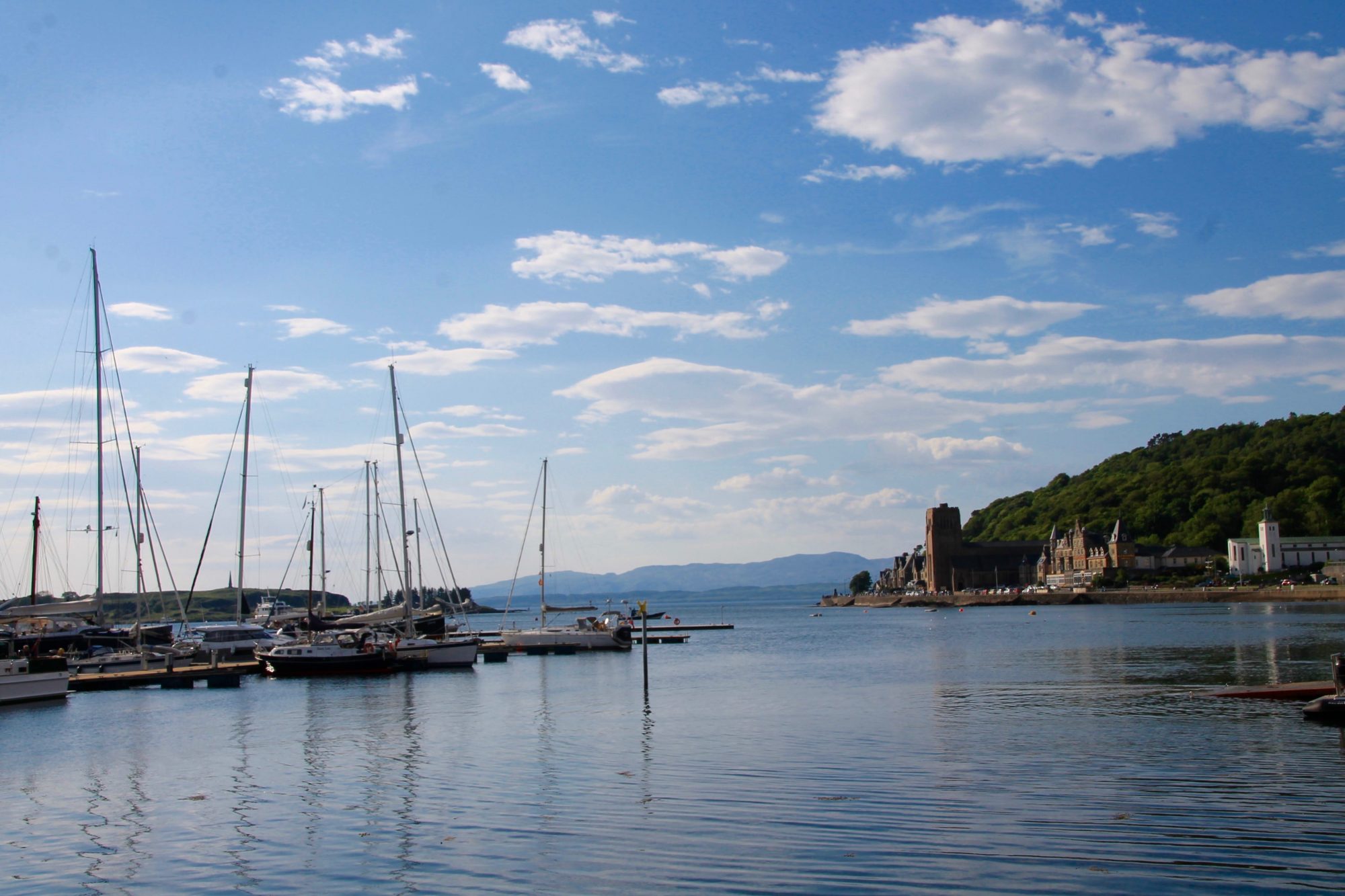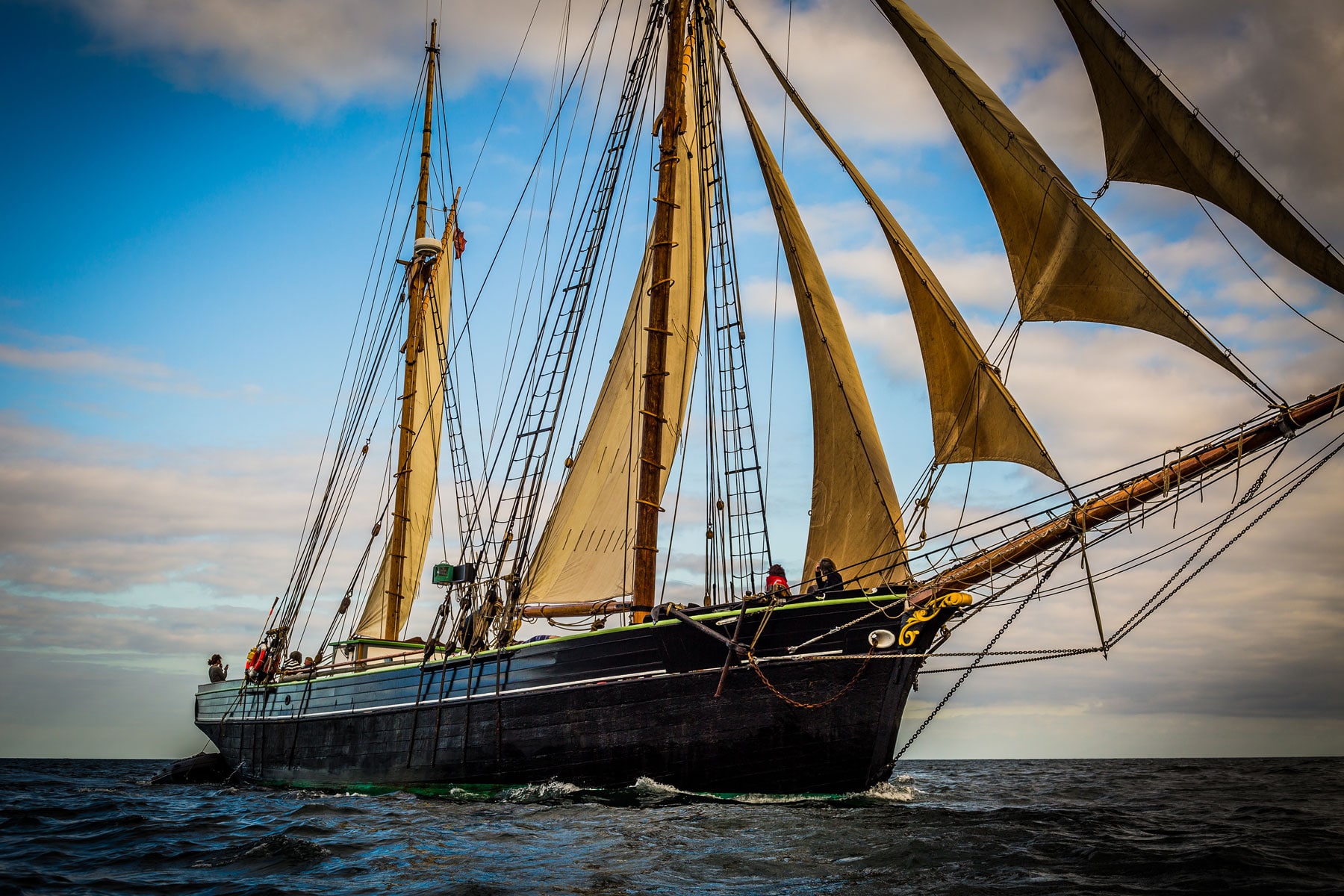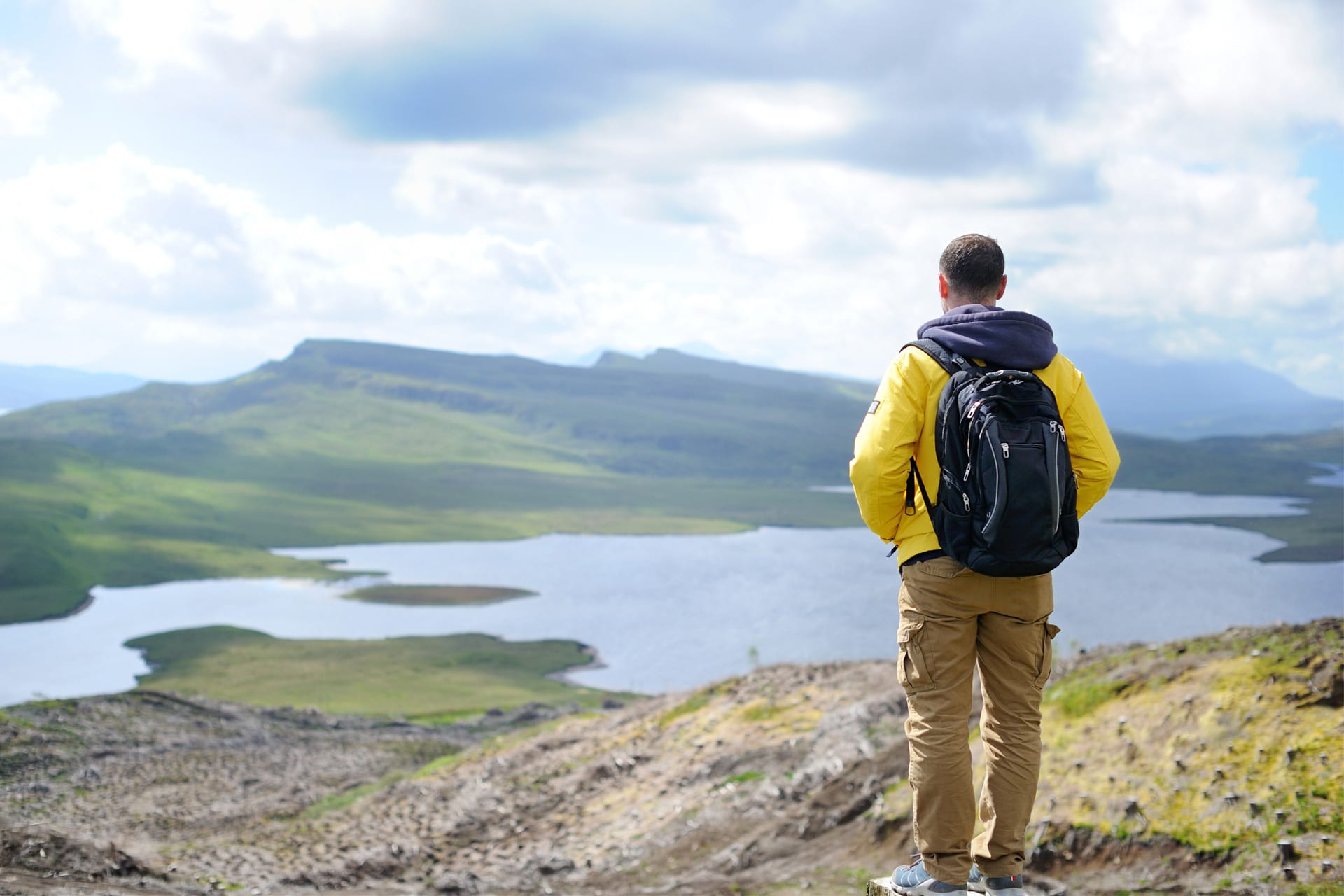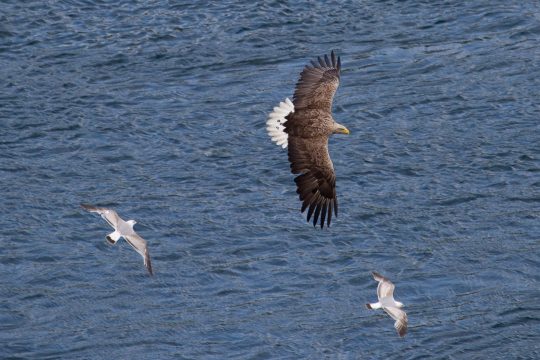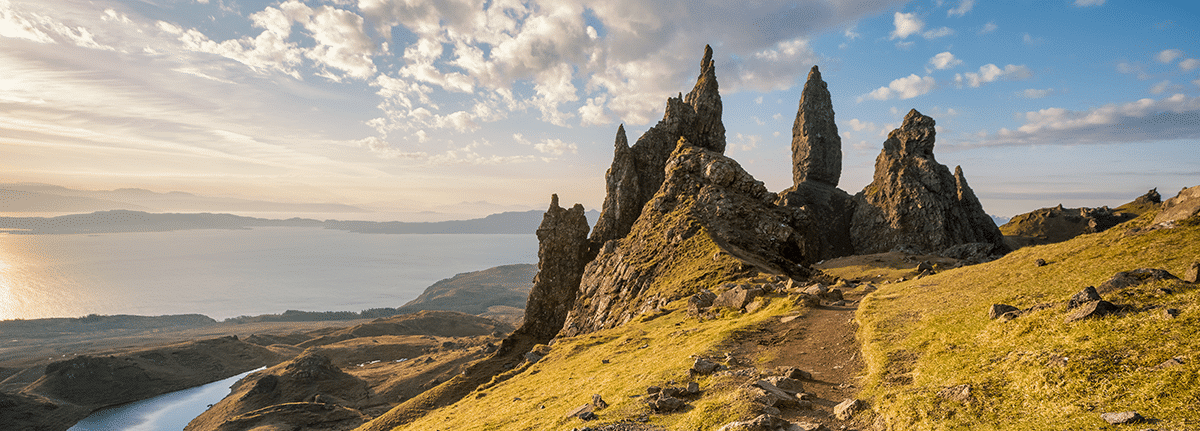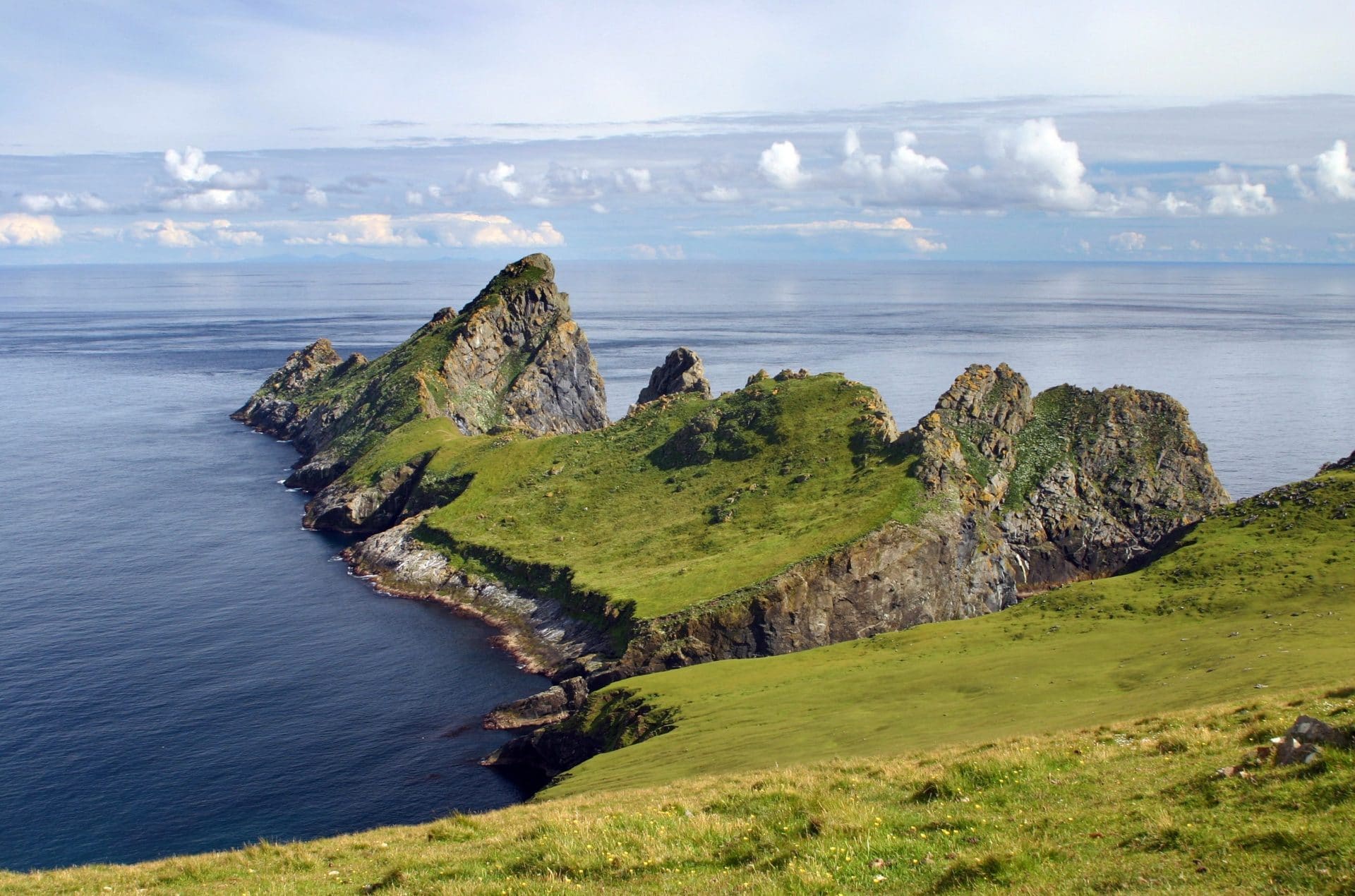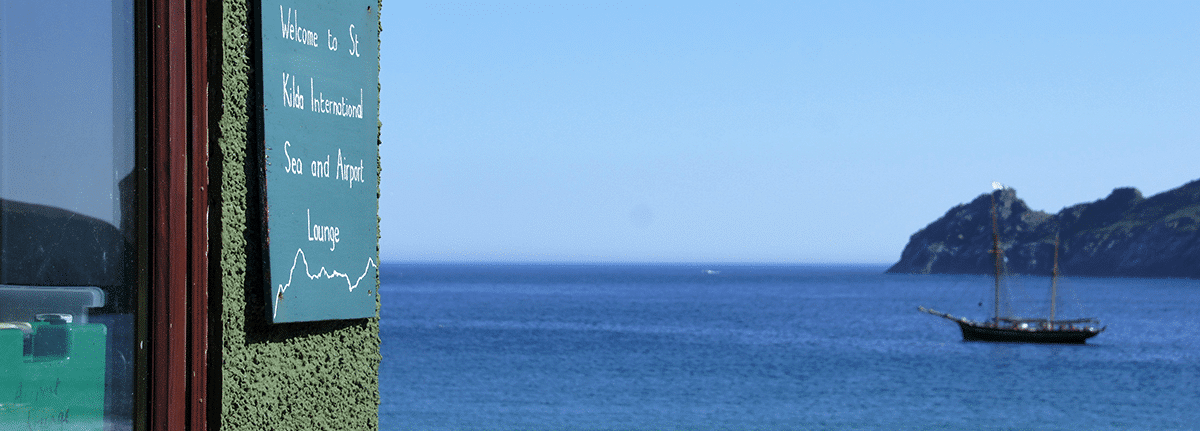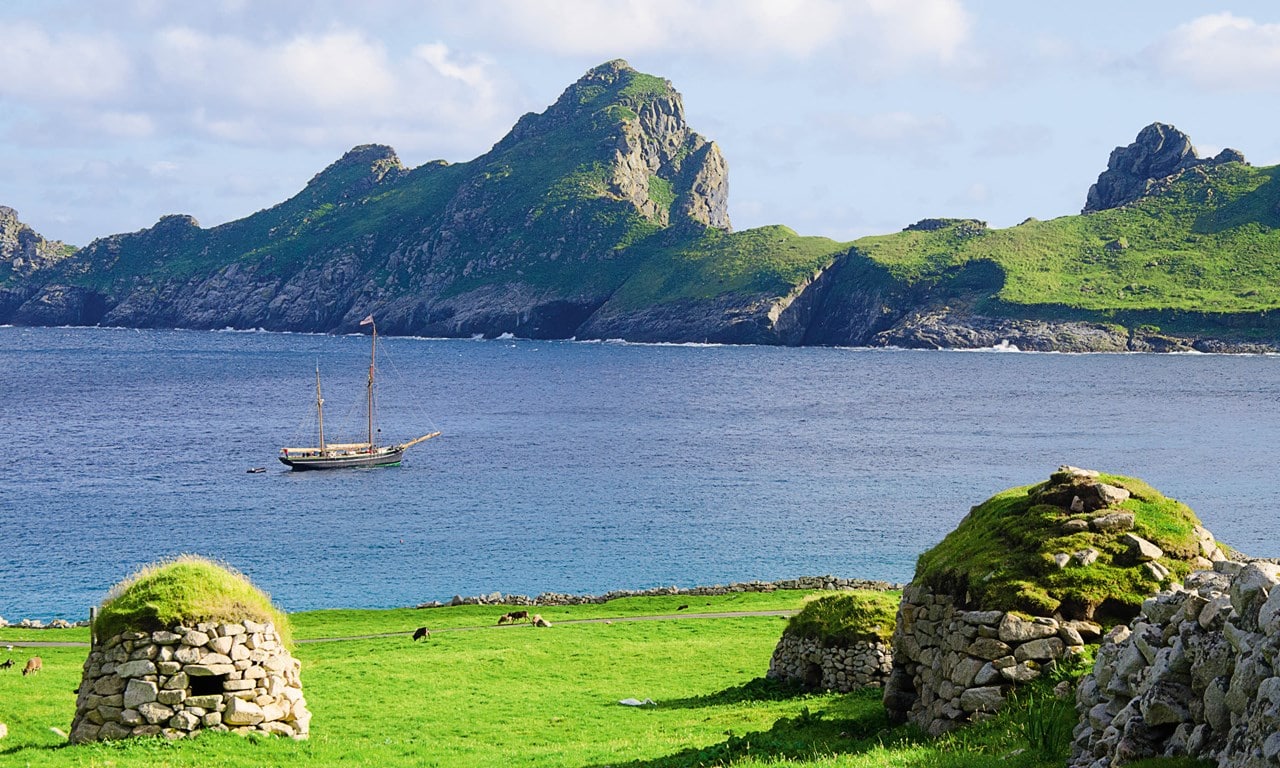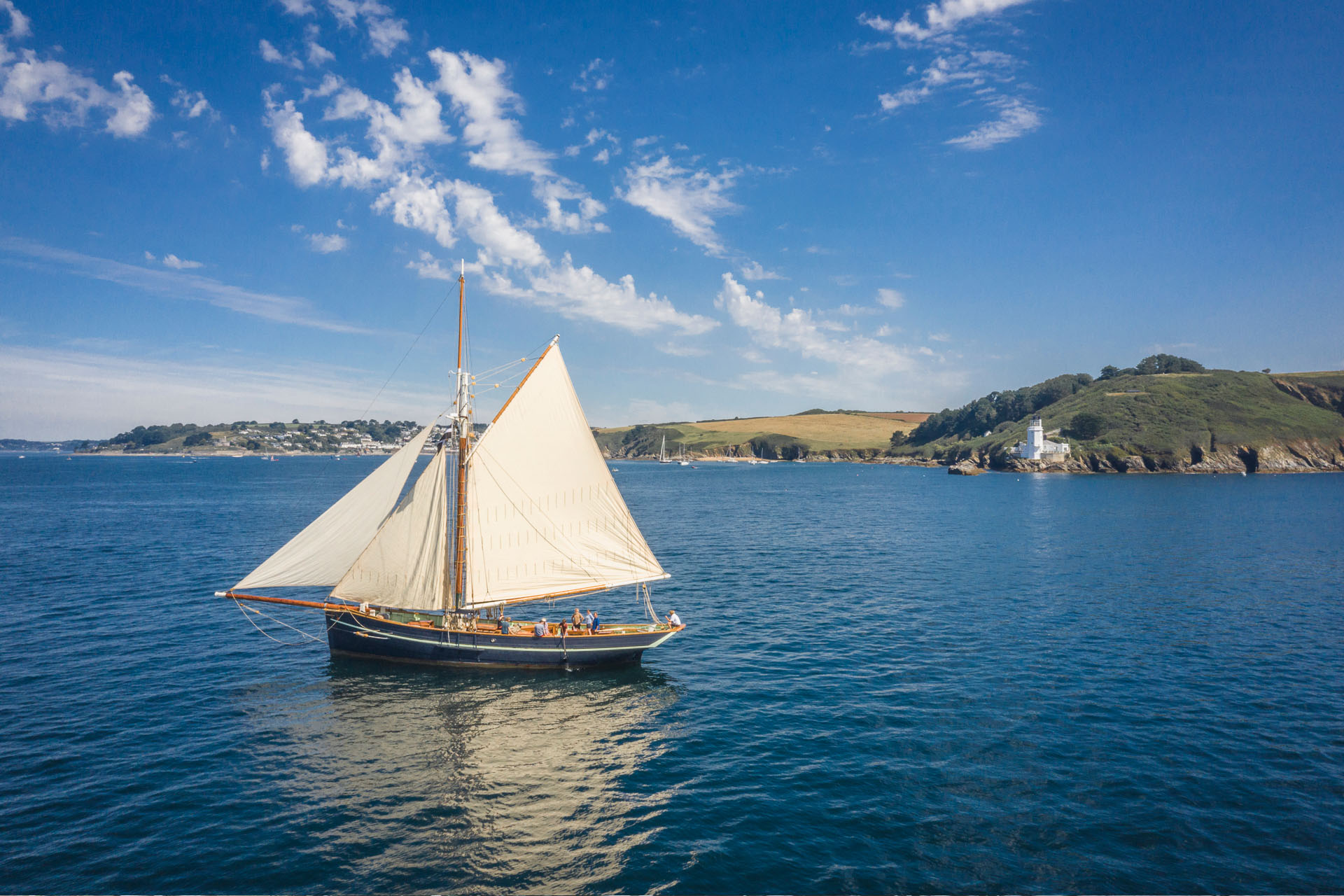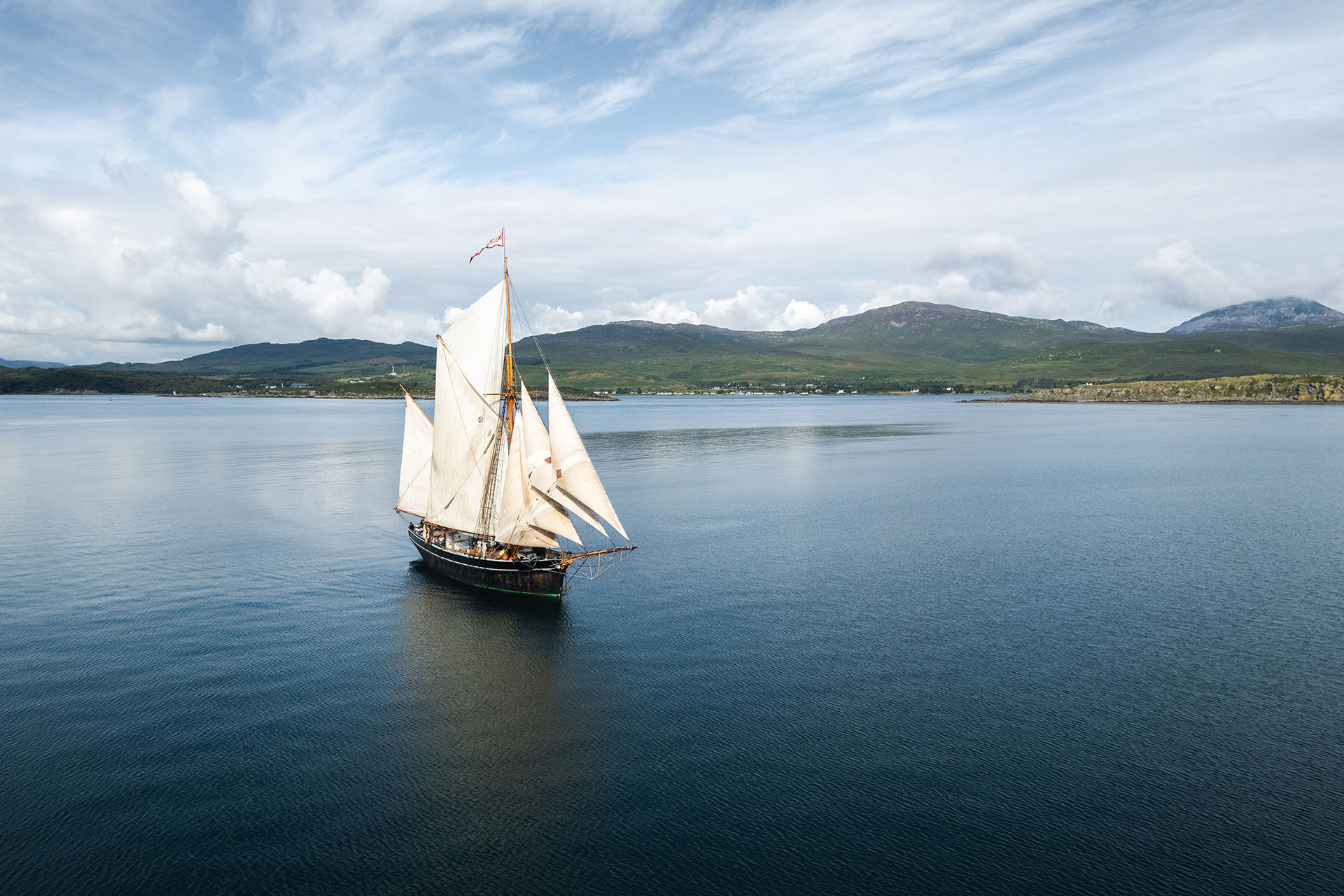
This sailing season we were thrilled to be joined by travel content creators Kim and Del Hogg of Going the Whole Hogg. They jumped on board historic ship Bessie Ellen for a week of island hopping and sailing in the Hebrides. Kim and Del had limited sailing experience, but are keen adventurers, having just returned from an Everest Base Camp trek.
Built in 1904, West Country trading ketch Bessie Ellen celebrates her 120th anniversary in 2024 with a Round Britain Tour. This seemed like the perfect time to welcome Kim and Del on board to get a taste of historic sailing!
Life on board historic ship Bessie Ellen is just as much about the experience of sailing as it is about the destination. From falling asleep to the softly creaking hull, to learning the ropes and taking the helm, even a complete novice can step back in time and experience life at sea as it would have been a century ago.
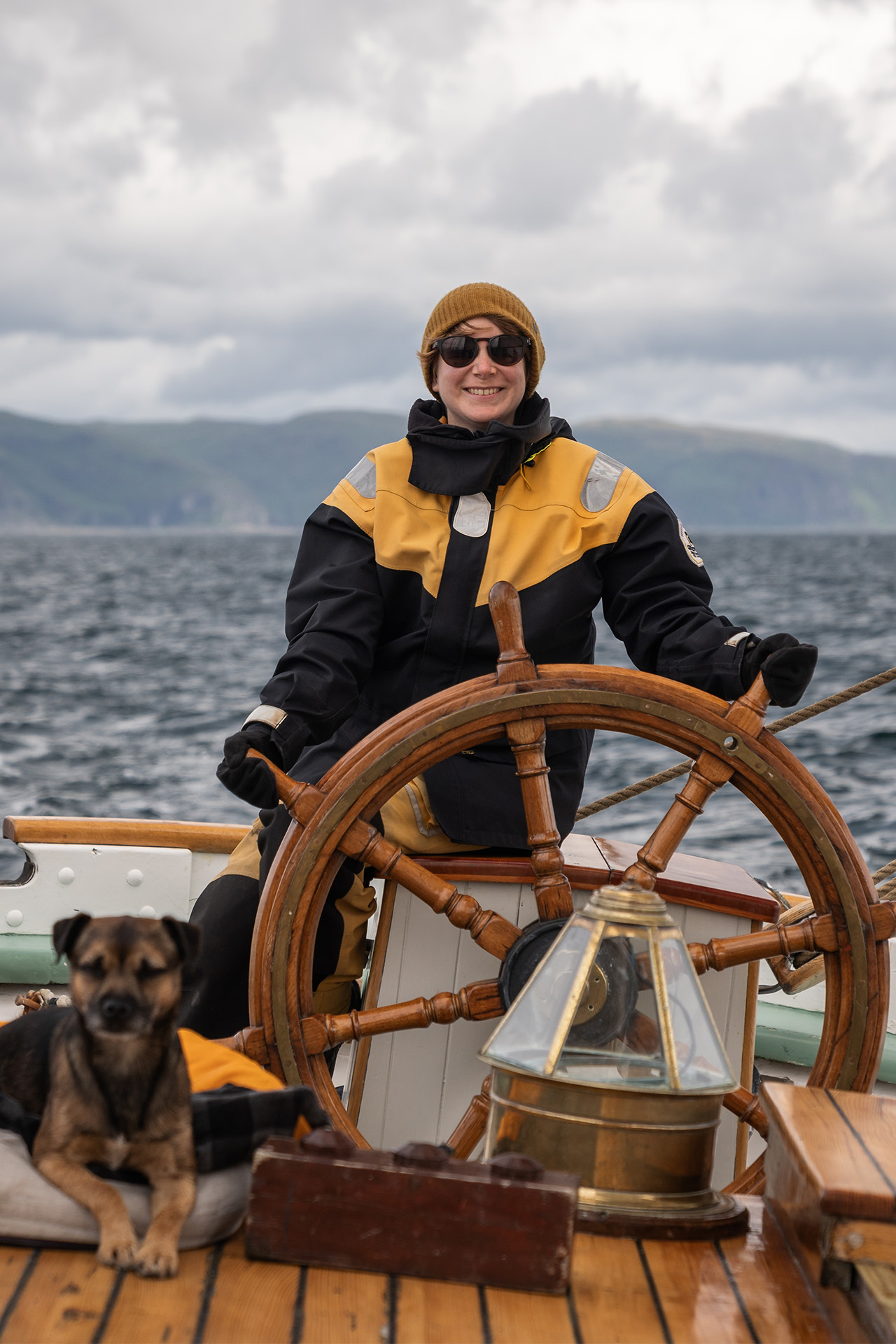
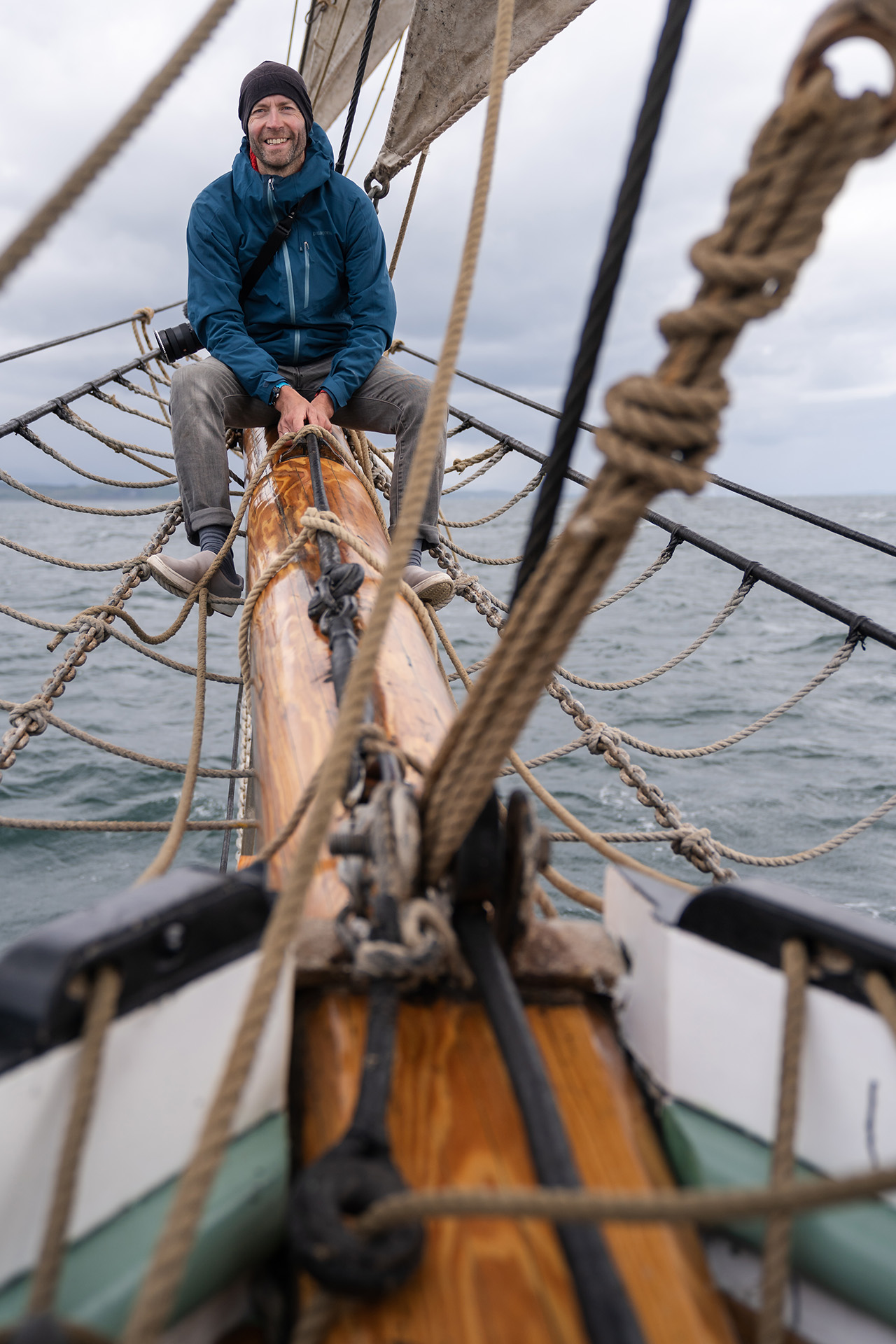
Owner and skipper Nikki discovered Bessie Ellen in a Danish shipyard in 1991, spending a year restoring her before returning to Plymouth. Nikki’s passion for preserving Bessie Ellen’s important place in maritime history shines through each voyage. As the Hoggs explain, skipper Nikki’s “passion for Bessie Ellen is infectious and she had us all getting stuck in, learning the ropes and being in charge at the helm…. It felt very rewarding to be combining travel and an outdoors experience with actively learning a new skill.”
Sailing on Bessie Ellen is suitable for all ages and levels of experience – so even if you’ve never set foot on a boat before you’ll soon find your sea legs! Kim and Del wrote an in-depth blog about their experience as novice sailors, you can read their full account below.
For a fully immersive experience, take a look at the Going the Whole Hogg‘s feature length ambient film of historic ship Bessie Ellen below.
Ready to set sail?
If you’d like to experience sailing on historic ship Bessie Ellen, why not join her Round Britain Tour in 2024. This tour will see Bessie Ellen make the journey around the breathtaking coastlines and historic ports of Britain. From the rugged beauty of Cornwall to Scotland’s magical lochs and islands, each voyage unveils the diverse wonders of Britain’s coastal heritage.

